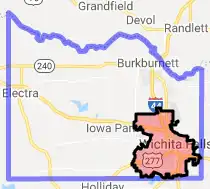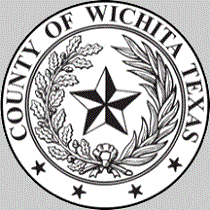Loading Data
Find USDA Eligible Properties in Wichita County
 browse list of realtors working in Wichita County
browse list of realtors working in Wichita County
Wichita county has 5 usdaproperties.com realtors ready to help with your search!
| April Featured Agents | |
|---|---|
| Katie Hein | from Century 21 Gold Coat Realtors |
| Scotty Crowley | from Century 21 Gold Coat Realtors |
| LeeAnn Burnett | from Anchored Realty |
| Bethann Oswald | from Bishop Realtor Group |
| Natasha Tate | from Hirschi Realtors |
Looking to buy in Wichita County, Texas?
There are 89 USDA backed residential loans in Wichita county with an average loan balance of $75,615. Over 87% of the loans helped first time home buyers. Borrowers were an average age of 38 years old. The typical appraised home value was around $75,846. On average the rural home size purchased with this loan was approximately 1,405 SqFt. Wichita county applies the standard USDA income limits to determine loan eligibility. For a household of upto 4 people the income limit is $90,300. For a household of between 5 and 8 people the income limit is increased to $119,200.
The size of Wichita County is roughly 1,637 square kilometers. USDA defined regions of rural loan ineligibility in Wichita cover 187 square kilometers of the county. Approximately 11.4% of Wichita County is ineligible for traditional USDA home loans. The influence score for Wichita County is 2. Look below for the interactive county level map illustration below for more details.
Select from the list of cities below or use the search feature to find active property listings in a city where you would like to live.
Start your search for USDA loan eligible properties in the cities of Wichita County, TX ![]()
* cities most likely to have USDA loan eligible properties for sale.
*Burkburnett • *Cashion Community • *Electra • Fowlkes • Haynesville • *Iowa Park • Kamay • *Pleasant Valley • Wichita Falls
A USDA loan is a mortgage option available to eligible homebuyers that is sponsored by the United States Department of Agriculture to promote homeownership in rural communities. USDA Loans, sometimes called "RD Loans," offer 100% financing options on eligible rural properties. USDAProperties can help you find USDA properties in Wichita County.
View the detailed USDA boundaries and read about general conditions of
Wichita County, Texas
 .
.Wichita County, located in the great state of Texas, has a rich history dating back to its establishment in 1882. Named after the Native American Wichita tribe who were also known as Kichai, the county occupies an area of 633 square miles in the north-central part of the state.
Before European settlers arrived, Wichita County was primarily inhabited by Wichita and Kichai tribes, followed by the Comanches and Kiowas. The first recorded exploration of the area was by Spanish explorer Jose Mares in 1787. However, significant European settlement began only after the Texas Revolution in the 1830s and 1840s, following the establishment of Fort Belknap to the south and Fort Richardson to the east.
The growth of Wichita County was accelerated by the construction of the Fort Worth and Denver Railway, which was completed in 1882. This new rail connection provided vital economic opportunities for the region by enabling cattle ranching and agriculture to reach broader markets. The county seat, Wichita Falls, became an important trading and transportation hub and experienced rapid growth during this time.
Wichita County experienced another boost when oil was discovered in the area in 1918, leading to the formation of the Burkburnett oil field. This event brought an influx of people and wealth to the area, transforming it into a thriving center of the oil industry.
Today, Wichita County is a diverse and prosperous region with a strong economy based on agriculture, oil and gas production, as well as manufacturing and the service sector. It also benefits from the presence of Sheppard Air Force Base, which was established during World War II and continues to play a significant role in national defense.
Fun fact: Wichita Falls, the county seat of Wichita County, is home to the "World's Littlest Skyscraper," also known as the Newby-McMahon Building. This four-story, 40-foot-tall building was constructed during the oil boom in 1919, and its peculiar size is attributed to an alleged swindle in which a blueprint scale confusion left investors with a much smaller building than expected.
Featured Cities of Texas







